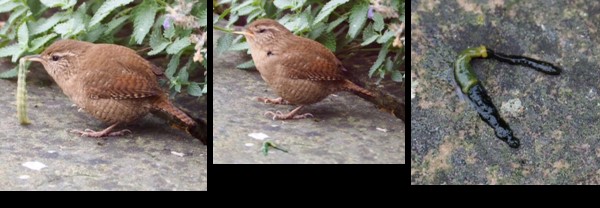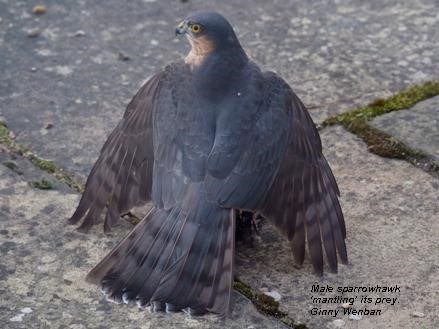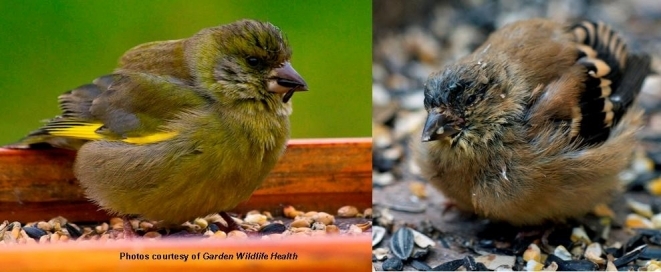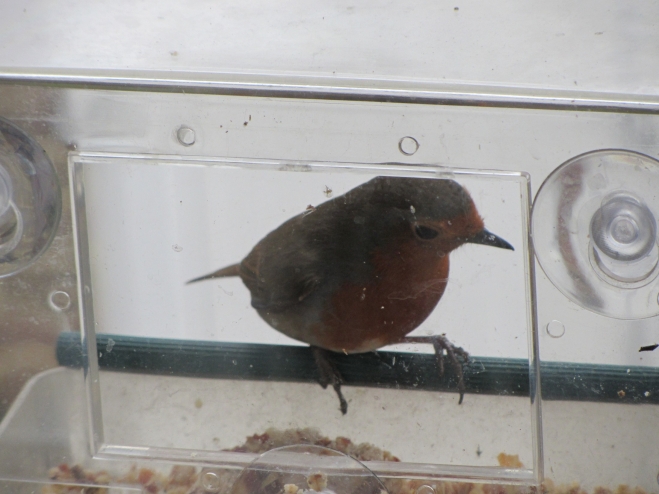Lifeline / Farleigh Events December
Topping up the calories
As the cold weather starts to bite, gardens become more important for birds’ survival – especially the smaller ones that can burn up to 50% of their weight maintaining their overnight body temperature. Wrens, like this one photographed in a Farleigh garden removing the insides of a caterpillar before eating it, are exclusively eaters of invertebrates.

But in winter these are scarce, so leave plenty of ‘untidy’ areas in your garden where they can still find hibernating insects and spiders.
Most small birds will use feeders (or feed on the ground beneath them) so keep these stocked with high energy foods like sunflower hearts, peanuts, mixed seeds or suet granules. Don’t provide salty food (garden birds’ kidneys can’t deal with salt) and never feed desiccated coconut as it swells inside and kills them. Avoid bread too, as it fills birds up without providing the necessary calories. Leave windfall fruit for blackbirds, thrushes and our Scandinavian visitors, fieldfares and redwings.
As always, nature has checks and balances, so attracting large numbers of birds to a single food source (garden feeders) also creates danger for them. The obvious danger is predators: mainly cats and an occasional sparrowhawk - like this one ‘mantling’ a starling it has just caught to hide it from competitors.

A less obvious but equally deadly danger is disease. Birds pass on pathogens via body fluids – saliva and droppings – so bringing them together increases their risk of infection with viruses, bacteria or parasites. If you see birds that are lethargic and fluffed-up, or have food sticking around their beak, the likelihood is they are ill, and could infect other birds.

Having attracted the birds in, we have a responsibility to keep feeders and bird baths clean. Ideally wash them weekly in hot soapy water (a spray from one of those kitchen cleaners that ‘kill 99% of all known germs’ is helpful too) and dry before refilling. Never leave mouldy food in them. Moving feeders around also helps prevent build-up of nasties in the ground. For more information about the health of garden wildlife see http://www.gardenwildlifehealth.org/
Some birds will come surprisingly close to feed. Feeders designed to stick on windows will bring your garden robin close enough for you to watch within a few feet. 500g of ‘economy’ porridge oats + half a bar of lard, zapped in the microwave and stirred together, makes an attractive and nutritious food for just 60p. Robins and blue tits love it.

Finally, keep your eyes and ears open wherever there are trees or shrubs with berries; supermarket car parks are a good place, and so is a well-stocked garden. Spectacular waxwings regularly cross the North Sea when there is a poor rowan crop in Scandinavia. They have a russet and black head, bright yellow tips to their tails, and bright sealing-wax red feather shafts on their wings – hence the name. They are already being seen in the UK this year, so you may just be lucky!






Make A Comment
Comments (1)